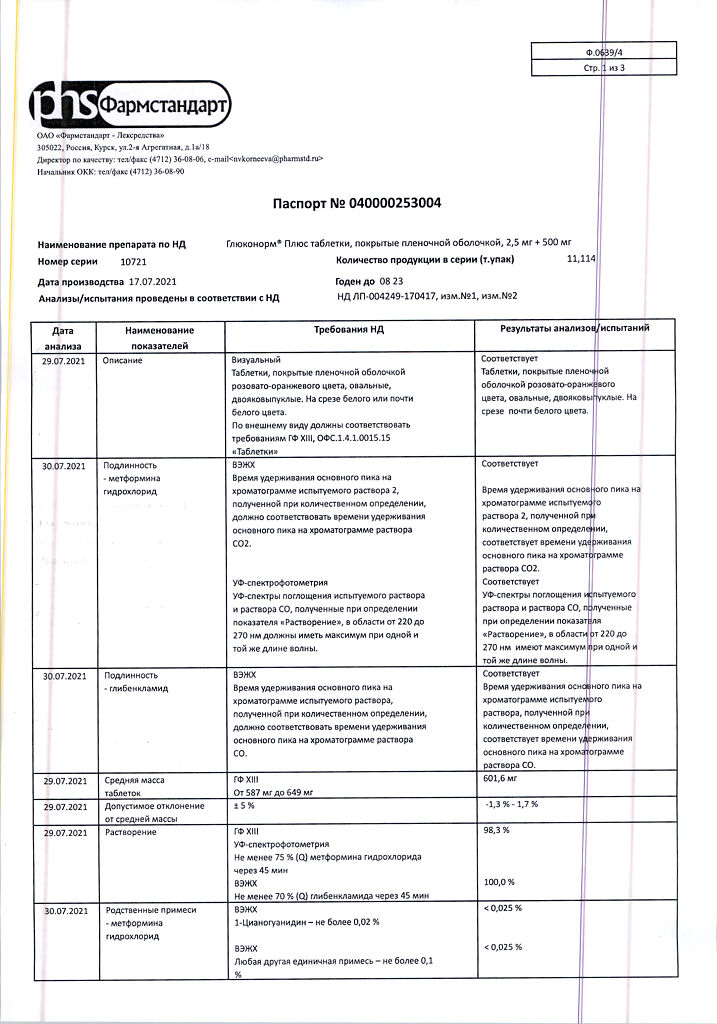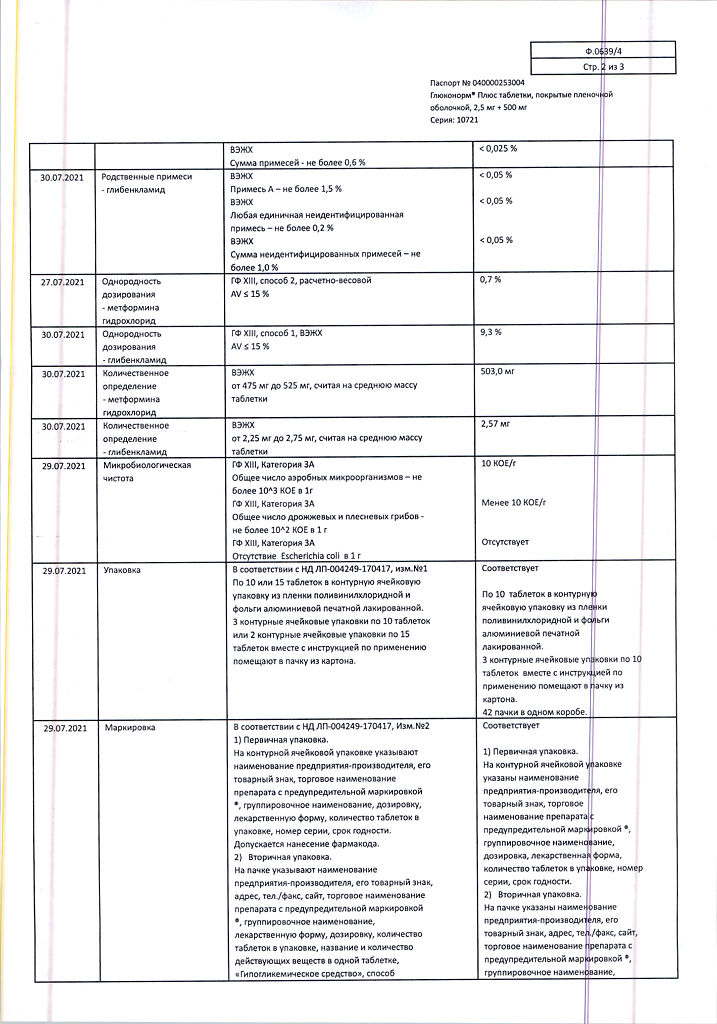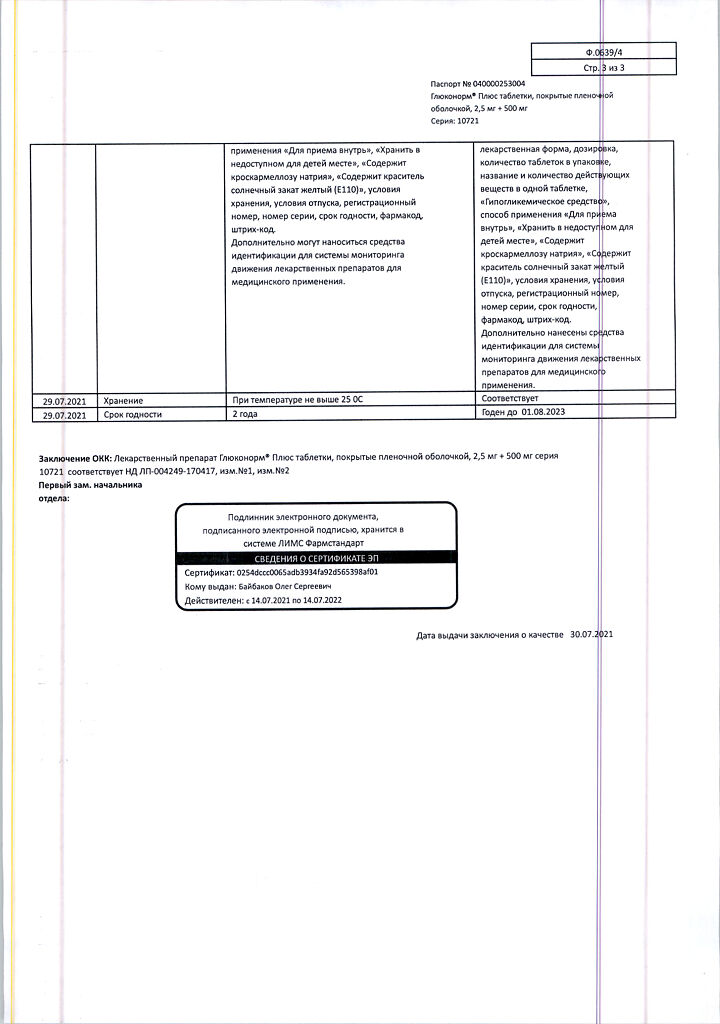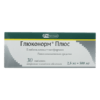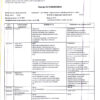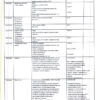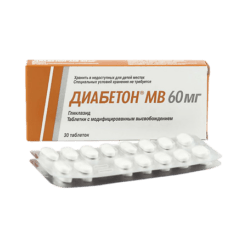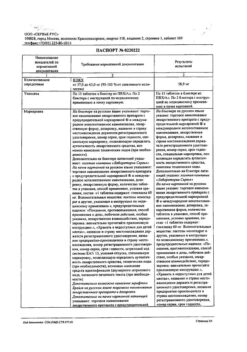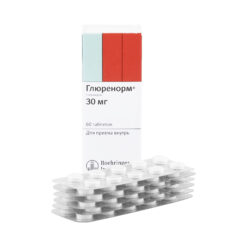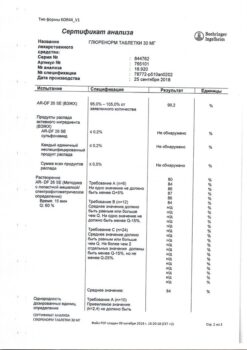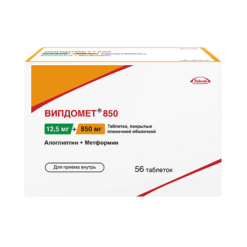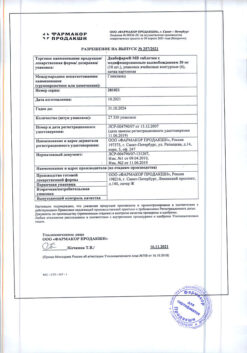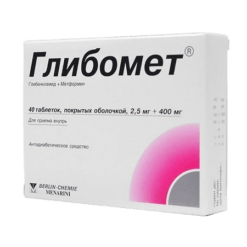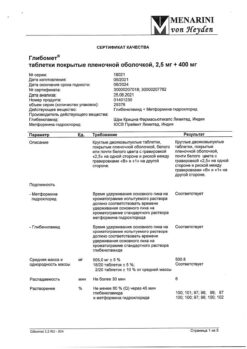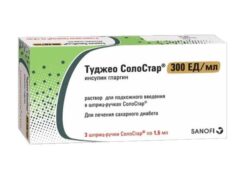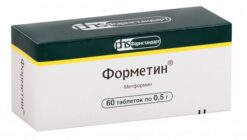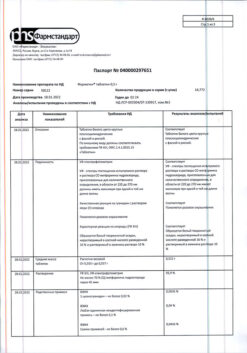No products in the cart.
Glukonorm plus, 2.5mg+500 mg 30 pcs
€8.35 €7.31
Description
Oral hypoglycemic agent (second generation sulfonylurea derivative + biguanide)
Indications
Indications
Type 2 diabetes mellitus in adults:
– if diet therapy, physical exercise and previous monotherapy with metformin or sulfonylurea derivatives are ineffective;
– to replace previous therapy with two drugs (metformin and sulfonylurea derivatives) in patients with stable and well-controlled glycemic levels.
Pharmacological effect
Pharmacological effect
Hypoglycemic agent for oral use (second generation sulfonylurea derivative + biguanide)
Special instructions
Special instructions
During treatment with Gluconorm® Plus, it is necessary to regularly monitor the level of glycemia on an empty stomach and after meals.
Lactic acidosis
Lactic acidosis is an extremely rare but serious (high mortality rate unless promptly treated) complication that can occur due to accumulation of metformin. Cases of lactic acidosis in patients receiving metformin occurred mainly in diabetic patients with severe renal failure. Other associated risk factors should be considered, such as poorly controlled diabetes, ketosis, prolonged fasting, excessive alcohol consumption, liver failure and any condition associated with severe hypoxia. The risk of developing lactic acidosis should be taken into account when nonspecific signs appear, such as muscle cramps accompanied by dyspeptic disorders, abdominal pain and severe malaise. In severe cases, acidotic dyspnea, hypoxia, hypothermia and coma may occur. Diagnostic laboratory parameters are: low blood pH, plasma lactate concentration above 5 mmol/L, increased anion gap and lactate/pyruvate ratio.
Hypoglycemia
Since the drug Gluconorm® Plus contains glibenclamide, taking the drug is accompanied by a risk of hypoglycemia in the patient. Gradual dose titration after initiation of treatment may prevent the occurrence of hypoglycemia. This treatment can only be prescribed to a patient who adheres to a regular diet (including breakfast). It is important that carbohydrate intake is regular, as the risk of hypoglycemia increases with late meals, insufficient or unbalanced carbohydrate intake. The development of hypoglycemia is most likely during a hypocaloric diet, after intense or prolonged physical activity, when drinking alcohol, or when taking a combination of hypoglycemic agents.
Due to compensatory reactions caused by hypoglycemia, sweating, fear, tachycardia, hypertension, palpitations, angina pectoris and arrhythmia may occur. The latter symptoms may be absent if hypoglycemia develops slowly, in the case of autonomic neuropathy, or while taking beta-blockers, clonidine, reserpine, guanethidine or sympathomimetics.
Other symptoms of hypoglycemia in patients with diabetes mellitus may include headache, hunger, nausea, vomiting, severe fatigue, sleep disturbance, restlessness, aggression, impaired concentration and psychomotor reactions, depression, confusion, speech impairment, visual impairment, trembling, paralysis and paresthesia, dizziness, delirium, convulsions, somnolence, unconsciousness, shallow breathing and bradycardia.
Careful prescribing, dose selection, and appropriate patient instructions are important to reduce the risk of hypoglycemia. If the patient has recurrent episodes of hypoglycemia that are either severe or due to unawareness of symptoms, treatment with other hypoglycemic agents should be considered.
Factors contributing to the development of hypoglycemia:
– simultaneous consumption of alcohol, especially during fasting;
– refusal or inability of the patient to interact with the doctor and follow the recommendations set out in the instructions for use (especially for elderly patients);
– poor nutrition, irregular eating, fasting or changes in diet;
– imbalance between physical activity and carbohydrate intake;
– renal failure;
– severe liver failure;
– overdose of the drug Gluconorm® Plus;
– certain endocrine disorders: insufficiency of the thyroid gland, pituitary gland and adrenal glands;
– simultaneous use of individual medications.
Kidney and liver failure
Pharmacokinetics and/or pharmacodynamics may vary in patients with hepatic impairment or severe renal impairment.
The hypoglycemia that occurs in such patients can be prolonged, in which case appropriate treatment should be started.
Instability of blood glucose
In case of surgery or other cause of diabetes decompensation, it is recommended to consider a temporary transition to insulin therapy. Symptoms of hypoglycemia include frequent urination, severe thirst, and dry skin.
48 hours before planned surgery or intravenous administration of an iodinated radiocontrast agent, Gluconorm® Plus should be discontinued. Treatment is recommended to be resumed after 48 hours, and only after renal function has been assessed and found to be normal.
Kidney function
Since metformin is eliminated by the kidneys, before starting treatment, and regularly thereafter, it is necessary to determine creatinine clearance and/or serum creatinine levels: at least once a year in patients with normal renal function, and 2-4 times a year in elderly patients, as well as in patients with creatinine clearance at the upper limit of normal.
Particular caution is recommended in cases where renal function may be impaired, for example in elderly patients, or when initiating antihypertensive therapy, diuretics or non-steroidal anti-inflammatory drugs (NSAIDs).
Other precautions
The patient should inform the doctor about the occurrence of a bronchopulmonary infection or infectious disease of the genitourinary organs.
Impact on the ability to drive vehicles. Wed and fur.:
Patients should be informed about the risk of hypoglycemia and should take precautions when driving vehicles and working with mechanisms that require increased concentration and speed of psychomotor reactions.
Active ingredient
Active ingredient
Glibenclamide, Metformin
Composition
Composition
Active ingredients:
glibenclamide – 2.50 mg,
metformin hydrochloride – 500 mg.
Excipients:
microcrystalline cellulose – 61.50 mg,
hyprolose (hydroxypropylcellulose) – 12.00 mg,
croscarmellose sodium – 18.00 mg,
magnesium stearate – 6.00 mg.
Shell for dosage 2.5 mg + 500 mg:
OPADRY® 20A230018 Orange [hypromellose (hydroxypropyl methylcellulose 6 cP) – 7.92 mg, hyprolose (hydroxypropylcellulose) – 4.62 mg, talc – 3.78 mg, titanium dioxide – 1.65 mg, sunset yellow dye (E110) – 0.03 mg] – 18.00 mg
Pregnancy
Pregnancy
The use of the drug is contraindicated during pregnancy.
Contraindications
Contraindications
– Hypersensitivity to metformin, glibenclamide or other sulfonylurea derivatives, as well as to excipients;
– diabetes mellitus type 1;
– diabetic ketoacidosis, diabetic precoma, diabetic coma;
– renal failure or impaired renal function (creatinine clearance less than 60 ml/min);
– acute conditions that can lead to changes in kidney function: dehydration, severe infection, shock, intravascular administration of iodine-containing contrast agents (see “Special Instructions”);
– acute or chronic diseases that are accompanied by tissue hypoxia: cardiac or respiratory failure, recent myocardial infarction, shock;
– liver failure;
– porphyria;
– pregnancy, breastfeeding period;
– simultaneous use of miconazole;
– extensive surgical operations;
– chronic alcoholism, acute alcohol intoxication;
– lactic acidosis (including history);
– adherence to a hypocaloric diet (less than 1000 cal/day).
It is not recommended to use the drug for persons over 60 years of age who perform heavy physical work, which is associated with an increased risk of developing lactic acidosis.
With caution:
Feverish syndrome, adrenal insufficiency, hypofunction of the anterior pituitary gland, diseases of the thyroid gland with uncompensated impairment of its function.
Side Effects
Side Effects
During treatment with Gluconorm® Plus, the following side effects may occur.
Side effects are presented depending on the effect on organs and organ systems.
The following adverse events noted when using the drug Gluconorm® Plus are distributed according to the frequency of occurrence in accordance with the following gradation: very often (≥ 1/10), often (≥ 1/100 to 1/10), infrequently (≥ 1/1000 to < 1/100), rarely (≥ 1/10000 to < 1/1000), very rarely (< 1/10000).
Within each group, adverse effects are presented in order of decreasing severity.
Metabolism and nutrition:
Hypoglycemia (see “Overdose”, “Special instructions”).
Rarely: attacks of hepatic porphyria and cutaneous porphyria.
Very rare: lactic acidosis (see “Special Instructions”).
Decreased absorption of vitamin B12, accompanied by a decrease in its concentration in the blood serum with long-term use of metformin. When megaloblastic anemia is detected, the possibility of such an etiology must be taken into account. Disulfiram-like reaction when drinking alcohol.
Laboratory indicators:
Uncommon: moderate to moderate increases in serum urea and creatinine concentrations.
Very rare: hyponatremia.
From the blood and lymphatic system:
Rarely: leukopenia, thrombocytopenia.
Very rare: agranulocytosis, hemolytic anemia, bone marrow aplasia and pancytopenia.
These adverse events disappear after discontinuation of the drug.
From the nervous system:
Common: taste disturbance (metallic taste in the mouth).
On the part of the visual organ: at the beginning of treatment, temporary visual impairment may occur due to a decrease in blood glucose.
From the gastrointestinal tract:
Very common: nausea, vomiting, diarrhea, abdominal pain and lack of appetite. These symptoms are more common at the beginning of treatment and in most cases go away on their own. To prevent the development of these symptoms, it is recommended to take the drug in 2 or 3 doses; Slowly increasing the dose of the drug also improves its tolerability.
From the side of the track and subcutaneous tissues:
Rarely: skin reactions such as: itching, urticaria, maculopapular rash.
Very rare: cutaneous or visceral allergic vasculitis, erythema multiforme, exfoliative dermatitis, photosensitivity.
From the immune system:
Very rare: anaphylactic shock.
Cross-hypersensitivity reactions to sulfonamides and their derivatives may occur.
From the liver and biliary tract:
Very rare: abnormal liver function tests or hepatitis requiring discontinuation of treatment.
Interaction
Interaction
Contraindicated combinations
Overdose
Overdose
In case of overdose, hypoglycemia may develop due to the presence of a sulfonylurea derivative in the drug (see “Special Instructions”).
Storage conditions
Storage conditions
At a temperature not exceeding 25 °C.
Keep out of the reach of children.
Shelf life
Shelf life
2 years. Do not use after the expiration date stated on the package.
Manufacturer
Manufacturer
Pharmstandard-Leksredstva, Russia
Additional information
| Shelf life | 2 years. Do not use after the expiration date stated on the package. |
|---|---|
| Conditions of storage | At a temperature not exceeding 25 ° C. Store out of the reach of children. |
| Manufacturer | Pharmstandard-Leksredstva, Russia |
| Medication form | pills |
| Brand | Pharmstandard-Leksredstva |
Related products
Buy Glukonorm plus, 2.5mg+500 mg 30 pcs with delivery to USA, UK, Europe and over 120 other countries.


